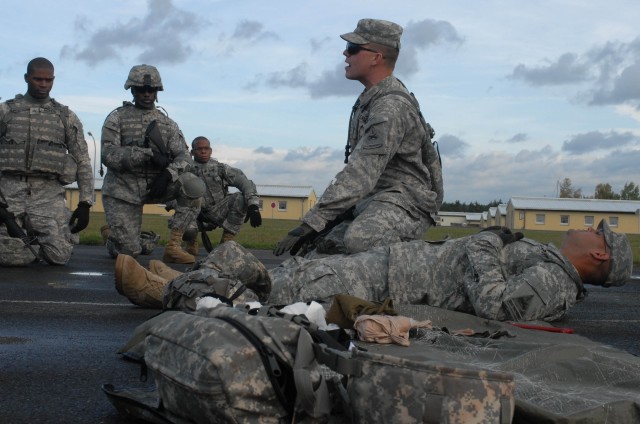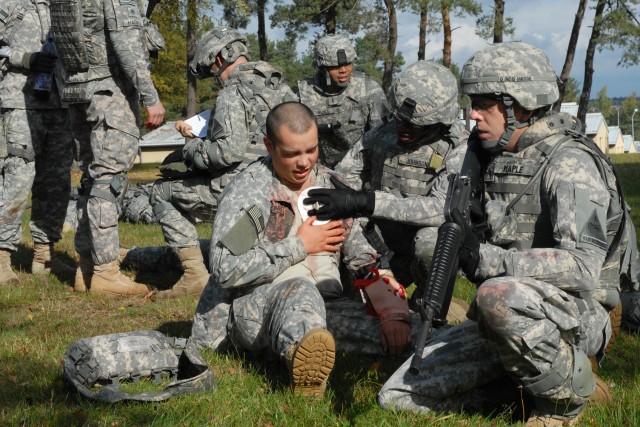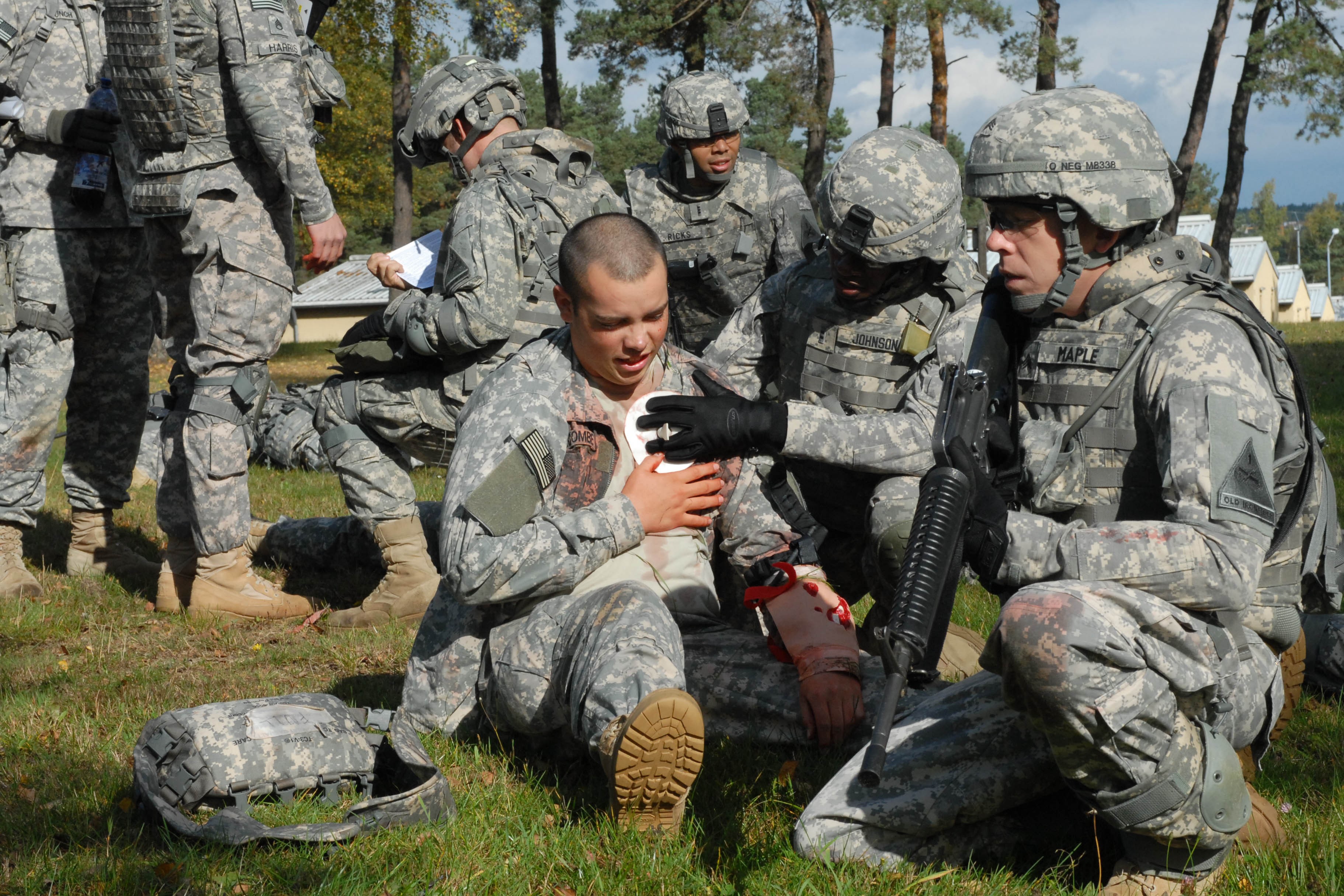GRAFENWOEHR, Germany - The Army cannot perform without its Soldiers, so it should be no surprise that first aid on the battlefield has become a number one priority.
In preparation for its Iraq deployment, the 1st Armored Division is training Soldiers on the technical aspects of first aid. During an Oct. 8 training scenario at the Grafenwoehr Training Area, Soldiers learned how to react to physical and emotional factors they may face on the battlefield.
In a preliminary class, Soldiers were shown how to stop bleeding, treat a chest wound, apply a tourniquet and evaluate a casualty.
The class improved the Soldier's technical knowledge of first aid.
An unannounced situational training exercise followed the classroom portion of the training and put the Soldiers on the spot to tested their teamwork and performance under pressure.
Soldiers from 1st AD saw firsthand the stress that can be created on a battlefield when Sgt. 1st Class Arthur James, Company B, Special Troops Battalion, 1st AD combat medic, yelled in a booming voice, "stop that bleeding...keep pressure on that wound!" Role-playing Soldiers were covered in fake blood with simulated injuries, and were crying out "medic!"
Lt. Col. Vincent Barnhart, 1st AD's division surgeon said, the training was meant to reflect the possible battlefield scenarios. He said the role players were instructed to act like they were in pain and call for help during the scenario. Moulage, a blood-like visual aid, made artificial wounds look lifelike.
James said he wanted to make the training a little more interesting so when the Soldiers are downrange they could respond more effectively if a real situation arises.
"Stop the bleeding...stop the bleeding, that's the first thing they (the Soldiers) need to do and the (combat action) tourniquet is what we really focus on," said James, a Los Angeles native.
Soldiers need to remember they don't need the skills of a doctor to help a casualty, James said. The first responder is there to provide initial care and reassurance.
"Talk to your buddy even if you don't know him, it's a U.S. Soldier, just talk to him, reassure him," said James.
He said teamwork is a crucial aspect of battlefield first aid.
"I want them to communicate and work as a team... if they don't work as a team then they're not going to [be successful]," said James.
The Soldiers were pushed to their limits in order to successfully complete the mission, but in the end, the intense conditions left an impression on the trainees.
"You could be in any type of situation and everything seems normal, and then in a blink of an eye something could change," said Capt. Michael Patchus, A Co., STB, 1st AD, air and missile defense officer in charge. "Then you're going to have to dig deep, and you're going to have to use first aid to pull yourself out of that situation."




Social Sharing